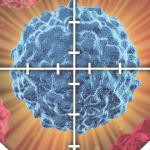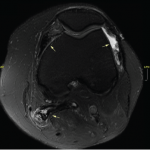CTLA-4 shares 29% homology with another protein expressed on T cells, CD28, and binds to the same B7 ligands, B7-1 and B7-2. Yet it binds with a higher affinity to these ligands than CD28, “because it has the ability to form homodimers, and by doing so, CTLA-4 allows bivalent binding of B7 molecules, which is not feasible for CD28,” said Dr. Boussiotis. CTLA-4 is a negative regulator of T cell responses. It mediates an inhibitory response, and the cross-linking of the CTLA-4 receptors in the presence of T cell receptor and CD28 stimulation results in a suppression of cytokine production.
‘PD-1 is there to protect the host from immune-mediated tissue destruction, which is so important in the setting of chronic antigen stimulation.’
T cells in the thymus exit the gland at a high, rapid rate. If these cells have escaped central tolerance and display specificity for endogenous antigens, they can infiltrate multiple tissues in the periphery, such as the heart and pancreas, Dr. Boussiotis said. CTLA-4 regulates the activation and expansion of T cells with specificity for endogenous antigens so it can help protect these organs and tissues. CD4 and T-regulatory cells play a dominant role in regulating autoimmune pathology in the context of CTLA-4 deficiency in a cell-extrinsic manner. This deficiency in regulatory cells changes the ability of antigen-presenting cells to express B7 molecules.
Multiple polymorphisms and splice variants of CTLA-4 have been associated with autoimmune diseases, such as RA, lupus, Hashimoto’s thyroiditis, multiple sclerosis, type 1 diabetes and Graves’ disease.
Protective Qualities
PD-1 is also present on the surface of T cells, and binds to two ligands, PD-L1 and PD-L2, said Dr. Boussiotis. Importantly, PD-L1 and PD-L2 are expressed not only on the activated antigen-presenting cells, but also on nonhematopoietic tissues, and for this reason, these ligands play a critical role in the regulation of autoimmunity in peripheral organs. PD-1 deficiency may result in delayed-onset, organ-specific autoimmunity, which can vary depending on the host’s genetic background, she said. PD-1-deficient mice have developed a lupus-like syndrome with arthritis and glomerulonephritis after six months of age.
PD-1 may function as a physiologic inhibitor of autoimmune lymphocyte responses in peripheral tissues, she said. As a consequence, PD-1 deficiency results in cardiomyopathy, which is mediated by antitroponin 1 antibodies, and it may also accelerate autoimmunity in such diseases as experimental autoimmune encephalomyelitis, colitis, diabetes and pneumonitis.
“What is unique about the PD-1 pathway is its expression and function in what we call exhausted T cells, and we are all aware that blocking the effects of PD-1 by blocking antibodies in these cells induces reinvigoration of the cells in the context of chronic infections,” said Dr. Boussiotis. Models that show this effect include patients with hepatitis B and C, and human immunodeficiency virus (HIV). However, when the PD-1 ligand is lost, mice get fulminant viral infection and die due to the autoimmune pathology, she said. “That is an important teaching point for us. It tells us that PD-1 is there to protect the host from immune-mediated tissue destruction, which is so important in the setting of chronic antigen stimulation.”

